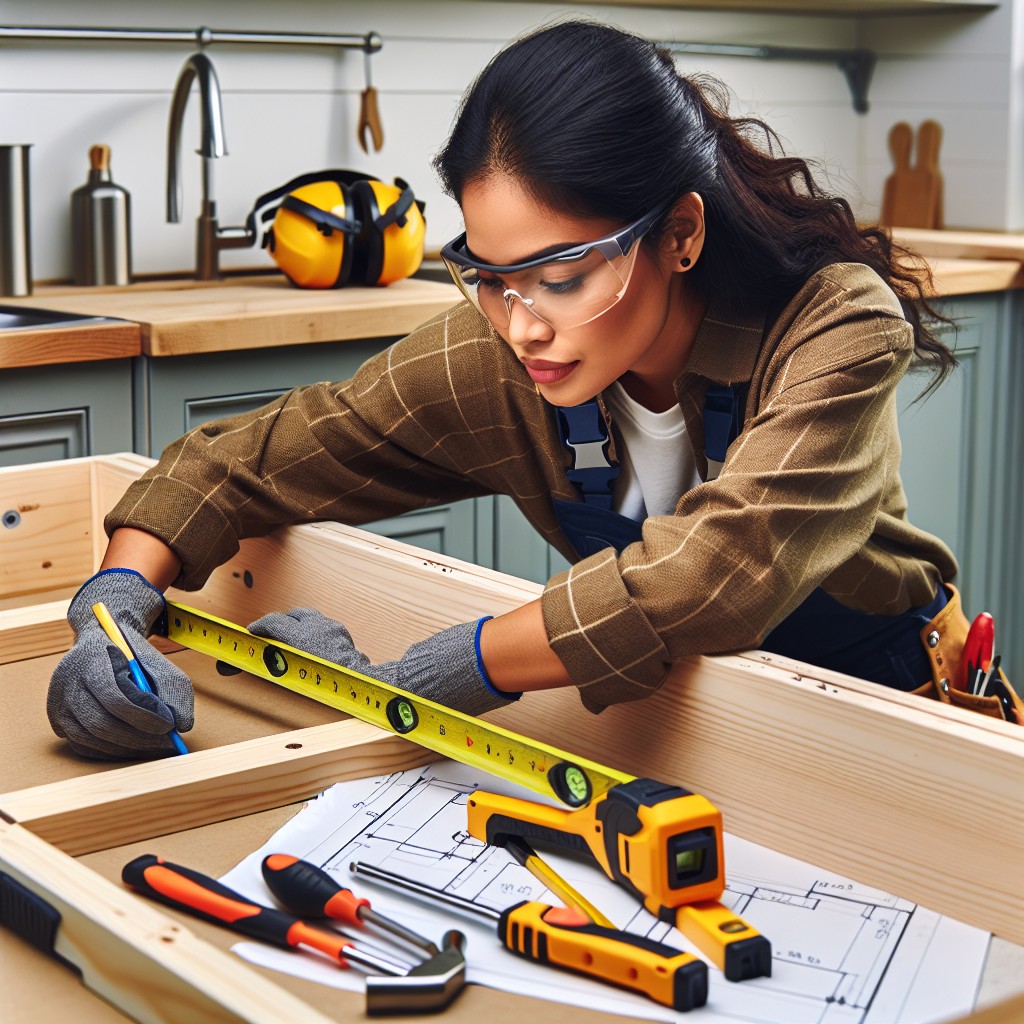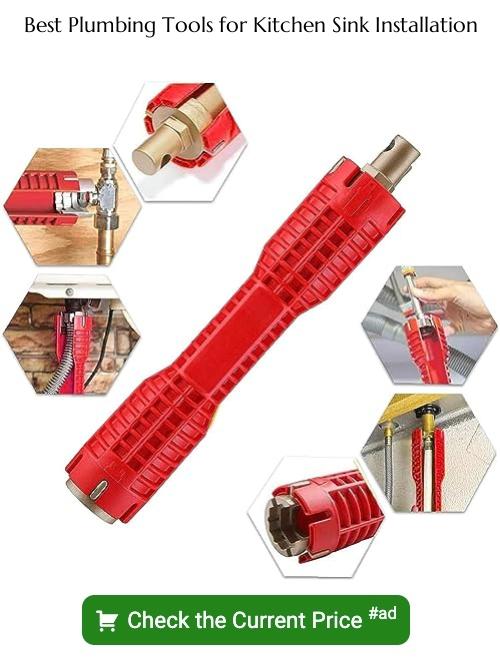Last updated on
Mastering the art of plumbing a kitchen sink can be a straightforward process; this article shall provide you with a clear and detailed step-by-step guide to ensure an efficient DIY plumbing job in your kitchen.
Key takeaways:
- Measure and mark the kitchen sink’s layout accurately.
- Cut a sink opening with a jigsaw carefully.
- Install the kitchen faucet and connect the water supply properly.
- Attach the dishwasher drain and install drain pipes correctly.
- Check for leaks and ensure all connections are secure.
What's Inside
Measure and Mark the Kitchen Sink’s Layout

Begin by confirming the size of the sink base cabinet to ensure a proper fit. Use the template included with the sink—if one is provided—to mark the cut lines on the countertop. If there’s no template, flip the sink upside down and trace the outline, remembering to align it evenly with the countertop’s edge. For sinks without a template, mark a second line about an inch inside the traced outline to serve as the cut line; this creates the necessary lip to support the sink.
Remember to consider the placement of the faucet, making sure there’s enough room for installation behind the sink. For undermount sinks, the exact position is crucial, as the countertop needs to overlay the sink’s edges. Precise measurements here are vital to ensure a secure fit and to avoid issues with the countertop’s structural integrity.
Lastly, take note of any structural beams beneath the countertop. Should modifications be needed to accommodate plumbing, plan accordingly to not compromise cabinet support.
Cut a Sink Opening With a Jigsaw
Before reaching for your jigsaw, ensure your measurements are precise – a gap too large can prove impossible to rectify. Use the template usually provided by the sink manufacturer, align it carefully with the designated area, and secure it with tape. With a steady hand, drill a pilot hole into a corner of the marked outline, large enough to accommodate the jigsaw blade comfortably.
When cutting along the line, maintain a steady pace and firm pressure, allowing the jigsaw to do the work without forcing it. Aim for a cut that is smooth to prevent any jagged edges that could complicate the sink’s installation. Remember to support the cutout section to prevent it from falling and causing damage to the unit below or the newly cut edge. If the edges aren’t perfect, don’t fret – minor deviations can be concealed by the sink’s lip or a bead of caulk during final installation.
Safety tip: Equip yourself with eye protection to shield against dust and debris; it’s not just about precision but also your well-being. Keep your work area clean and uncluttered to ensure nothing obstructs your process or tools.
Install Kitchen Faucet and Connect Water Supply
Begin by setting your faucet into the designated holes in your sink. For faucets that require gaskets, place the gasket underneath the faucet before tightening it into position. This seals the base and prevents leaks. Use a basin wrench for hard-to-reach areas under the sink when securing the faucet.
Thread the water supply lines through their respective holes, ensuring that hot and cold lines match the proper faucet handles. Hand-tighten the supply line nuts to the faucet stems, then give them a final snug with an adjustable wrench.
After mounting the faucet, connect the other ends of the supply lines to the shut-off valves under the sink. An important tip: gently bend flexible supply lines to fit if necessary, but avoid kinking them which can impede water flow.
Turn the shut-off valves counter-clockwise to open them and test water flow by turning on the faucet. Keep an eye out for drips at all connections and tighten if you spot any leaks. Remember, over-tightening can damage fittings, so aim for a firm, yet careful approach.
Attach Dishwasher Drain and Install Drain Pipes
Ensuring your kitchen sink properly drains into your plumbing system and accommodating for your dishwasher is a crucial step. Here’s how you can connect the pieces:
- Identify the drain tailpiece, which is the vertical pipe coming down from the sink basin. Make sure it’s the right length, and if necessary, cut it to fit using a hacksaw.
- Attach the dishwasher drain hose to the nozzle on the side of the garbage disposal or to the dishwasher tailpiece if you don’t have a disposal. Secure it with a hose clamp to prevent leaks.
- For the main drain, you’ll need to install a P-trap, which is essential for preventing sewer gases from entering your home. The P-trap should be connected between the tailpiece and the drain pipe in the wall.
- Use plumber’s tape on threaded connections to ensure a watertight seal. Consider slip-joint connections for ease of future maintenance; these are hand tightened and can be easily removed.
- Keep the horizontal drain pipe at a slight downward angle towards the wall connection for proper drainage. This angle is typically 1/4 inch per foot of pipe.
- After everything is connected, run water through the system and observe any leaks. Tighten any connections as necessary.
Remember, plumbing requires precision and patience. Take your time to ensure a leak-free installation.
Check for Leaks
Ensuring your workmanship holds water, literally, is a critical step in avoiding potential damage from leaks. After all connections are securely made, it’s time to test.
Here’s what to do:
- Run the water: Turn on both the hot and cold faucets. Pay close attention to the water flow for a steady stream without sputtering, which can indicate air in the lines.
- Inspect joints: Look closely at each connection point for drips. Areas to inspect include where the faucet meets the sink, where the sink meets the drain, and where the pipes connect.
- Feel for moisture: Use your hands to feel along the pipes and underside of the sink. Sometimes leaks aren’t visible but can be detected by a slight wetness or coolness on the pipes.
- Wipe and wait: Dry off any condensation and wait a few minutes. Moisture can slowly seep through tiny leaks, so patience is key. Wipe with a dry cloth afterward to check for new wet spots.
- If you find a leak, tighten the connections: Joints and couplings may need an extra quarter turn or so. Avoid over-tightening, which can damage fittings or strip threads.
Remember, detecting and addressing leaks promptly will keep your kitchen damage-free and fully functional. If leaks persist, it might be time to call a professional.





